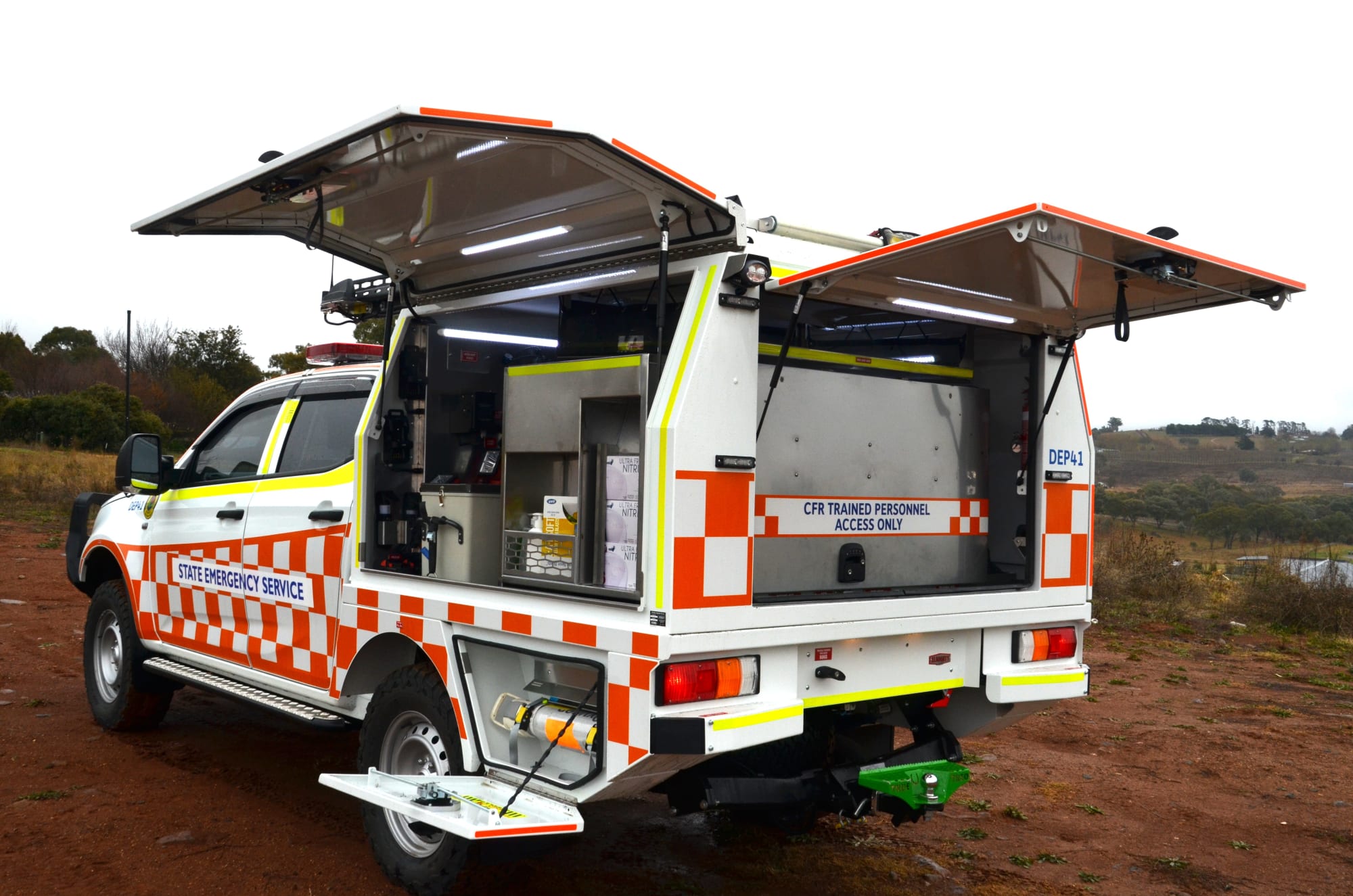Invest
Australia's June quarter GDP growth driven by consumer and government spending
Invest
Australia's June quarter GDP growth driven by consumer and government spending
Australia's economy has shown unexpected resilience in the June 2025 quarter, with household and government consumption driving growth despite a significant decline in public investment. The Australian Bureau of Statistics (ABS) reported a 0.6% increase in GDP quarter-on-quarter and a 1.8% rise year-on-year, with nominal GDP up by 0.7%. For the 2024–25 financial year, the growth rate stood at 1.3%. This performance was largely attributed to robust consumer and government spending, which managed to offset the downturn in public investment.
Australia's June quarter GDP growth driven by consumer and government spending
Australia's economy has shown unexpected resilience in the June 2025 quarter, with household and government consumption driving growth despite a significant decline in public investment. The Australian Bureau of Statistics (ABS) reported a 0.6% increase in GDP quarter-on-quarter and a 1.8% rise year-on-year, with nominal GDP up by 0.7%. For the 2024–25 financial year, the growth rate stood at 1.3%. This performance was largely attributed to robust consumer and government spending, which managed to offset the downturn in public investment.

The ABS highlighted that spending during this period covered both essential and discretionary categories, boosted by end-of-financial-year promotions, new product cycles, and an extended holiday period. Government consumption, particularly in social services and benefits, also saw a notable increase. "Spending spanned essentials and discretionary categories, buoyed by end-of-financial-year promotions, new product cycles, and an extended holiday period," an ABS official stated.
The current economic climate indicates a pivot towards consumer-led growth, albeit with some risks. A bank economist described the situation as a "shaky handover," which is solid enough to clear immediate hurdles but vulnerable if factors such as incomes, consumer confidence, or labour markets weaken.
Policy and business strategies adapt to demand
Government policies have been instrumental in supporting near-term consumption. Targeted social benefits and tax changes in mid-2024 improved disposable incomes, providing some relief to households facing elevated living costs. However, public investment faced delays and project reprioritisations, which constrained the capital expenditure impulse. This has critical implications for sectors like construction, engineering, and materials.
Businesses, on the other hand, have responded tactically to these changes. Large retailers capitalised on aggressive end-of-financial-year promotions and quicker product refreshes to capture consumer spending. Travel and hospitality sectors expanded their capacity during the school holiday period, while digital channels enhanced consumer engagement through personalised offers. Utilities, telecommunications companies, and insurers utilised retention pricing and bundled value to reduce customer churn, recognising a consumer base that remains price-sensitive but willing to spend for perceived value.

Operational strategies define sector winners
The quarter saw three key operational strategies that defined sector winners:
- Precision merchandising and dynamic pricing: Retailers who leveraged inventory analytics with flexible pricing strategies managed to capture increased consumer spending without excessive discounting. This involved the use of real-time sell-through dashboards, SKU-level elasticity models, and targeted markdowns during peak shopping periods.
- Experience-led capacity deployment: Hospitality and domestic travel operators focused their resources on peak periods, using revenue management techniques and upsell pathways to protect margins.
- Targeted public outlays: Government consumption increases, particularly in social benefits and service delivery, were implemented through established channels, ensuring quick deployment and immediate impact on local economies.
In contrast, public investment pulled back as agencies re-sequenced projects, faced procurement bottlenecks, or waited for cost resets. This reduction in public investment tempered demand for heavy equipment, steel, and aggregate, affecting revenue recognition for contractors.
Economic insights from the national accounts
The national accounts reveal several insights for decision-makers:
- Real vs nominal growth: With nominal GDP up 0.7% and real GDP up 0.6%, the implicit price deflator remained stable. This indicates that growth was not solely driven by inflation, and underlying volumes rose, which is positive news for throughput businesses.
- Composition over headline figures: Household consumption and government services act as high-frequency stabilisers, while public investment, although lumpy, is crucial for medium-term productivity. A quarter where consumption offsets capex slippage rescues the print but doesn't address future capacity challenges.
- Household balance sheets: The savings ratio remains low by historical standards. Consumption is being supported by income measures and price normalisation in some categories, but leverage-sensitive cohorts remain exposed to interest rate and employment shocks.
The ABS emphasised the breadth of spending, noting that it covered essentials and discretionary items, reflecting robust retail events and seasonal travel. "That breadth matters: it signals more than mere utility purchasing—there’s discretionary intent when the offer is compelling," an ABS representative explained.
Sector performance and future strategy signals
The GDP figures reveal varied sector performances:
- Retail and e-commerce: Outperformed in volume where pricing science and inventory discipline were strongest, with loyalty-led retailers experiencing higher repeat purchase rates.
- Travel and hospitality: Benefited from domestic leisure and holiday timing, with operators using variable staffing models to expand margins.
- Construction and heavy industry: Faced a demand gap due to declining public capex, though order books held where private developers and resources projects filled the void.
- Financial services: Payments volumes increased, and unsecured credit demand rose slightly, prompting risk teams to tighten measures on vulnerable cohorts.
Looking ahead, businesses are advised to protect gross margins using data-driven strategies rather than blunt discounting, rebuild working capital agility, and price to perceived value. For contractors, diversifying towards maintenance and minor works, accelerating private client pipelines, and locking in indexation clauses could help bridge the capex gap. Additionally, scenario planning for potential household stress is recommended to mitigate risks associated with employment shocks and savings fluctuations.
The path to durable expansion hinges on income growth, interest rates, and employment stability. If wages and tax relief continue to support disposable income while inflation trends lower, real spending could remain robust. Moreover, a re-acceleration of public investment in late 2025, once procurement and project reprioritisations stabilise, would improve the growth mix, enhancing productivity and revitalising the construction sector.

Economy
Global deal activity declines by 6% amid economic uncertainty, reports GlobalData
In a year characterised by economic turbulence and evolving market conditions, global deal activity has witnessed a notable downturn during the first ten months of 2025. According to GlobalData, a ...Read more

Economy
Australia’s softening labour market puts another RBA cut in play — here’s what business should do now
A four-year high in unemployment has revived expectations the Reserve Bank could deliver another rate cut as soon as November. With quarterly GDP growth running at 0.6 per cent and annual growth at ...Read more

Economy
Rising CPI reinforces RBA’s stance as rate cut expectations remain: State Street
State Street Global Advisors says the Reserve Bank of Australia (RBA) is likely to hold its current policy outlook following the release of September quarter inflation data, which showed an unexpected ...Read more

Economy
NSW SES boosts tsunami preparedness ahead of World Tsunami Awareness Day
As World Tsunami Awareness Day approaches on 5 November, the New South Wales State Emergency Service (NSW SES) is ramping up efforts to enhance tsunami preparedness along the east coastRead more

Economy
Lifesaving Regional Response Strengthened with New NSW SES Vehicles
In a significant boost to regional emergency services, the NSW State Emergency Service (SES) has unveiled 11 new Community First Response (CFR) vehicles, designed to enhance the speed and safety of ...Read more

Economy
Australia's GDP surprise is real but operators should heed the growth mix warning light
Australia’s June-quarter growth beat expectations on the strength of household consumption and government spending, even as public investment sagged. The upside surprise signals resilience, but the ...Read more

Economy
Households carried the quarter: what Australia’s upside GDP surprise means for strategy now
Australia’s economy expanded faster than expected in the June 2025 quarter, with GDP up 0.6 per cent quarter-on-quarter and 1.8 per cent year-on-year — the strongest pace in two years. The kicker ...Read more

Economy
Inflation dynamics in Australia: Electricity subsidies and labour market in focus
In a recent economic analysis, experts from State Street have highlighted significant developments in Australia's inflation landscape, attributing the changes primarily to the withdrawal of ...Read more

Economy
Global deal activity declines by 6% amid economic uncertainty, reports GlobalData
In a year characterised by economic turbulence and evolving market conditions, global deal activity has witnessed a notable downturn during the first ten months of 2025. According to GlobalData, a ...Read more

Economy
Australia’s softening labour market puts another RBA cut in play — here’s what business should do now
A four-year high in unemployment has revived expectations the Reserve Bank could deliver another rate cut as soon as November. With quarterly GDP growth running at 0.6 per cent and annual growth at ...Read more

Economy
Rising CPI reinforces RBA’s stance as rate cut expectations remain: State Street
State Street Global Advisors says the Reserve Bank of Australia (RBA) is likely to hold its current policy outlook following the release of September quarter inflation data, which showed an unexpected ...Read more

Economy
NSW SES boosts tsunami preparedness ahead of World Tsunami Awareness Day
As World Tsunami Awareness Day approaches on 5 November, the New South Wales State Emergency Service (NSW SES) is ramping up efforts to enhance tsunami preparedness along the east coastRead more

Economy
Lifesaving Regional Response Strengthened with New NSW SES Vehicles
In a significant boost to regional emergency services, the NSW State Emergency Service (SES) has unveiled 11 new Community First Response (CFR) vehicles, designed to enhance the speed and safety of ...Read more

Economy
Australia's GDP surprise is real but operators should heed the growth mix warning light
Australia’s June-quarter growth beat expectations on the strength of household consumption and government spending, even as public investment sagged. The upside surprise signals resilience, but the ...Read more

Economy
Households carried the quarter: what Australia’s upside GDP surprise means for strategy now
Australia’s economy expanded faster than expected in the June 2025 quarter, with GDP up 0.6 per cent quarter-on-quarter and 1.8 per cent year-on-year — the strongest pace in two years. The kicker ...Read more

Economy
Inflation dynamics in Australia: Electricity subsidies and labour market in focus
In a recent economic analysis, experts from State Street have highlighted significant developments in Australia's inflation landscape, attributing the changes primarily to the withdrawal of ...Read more








